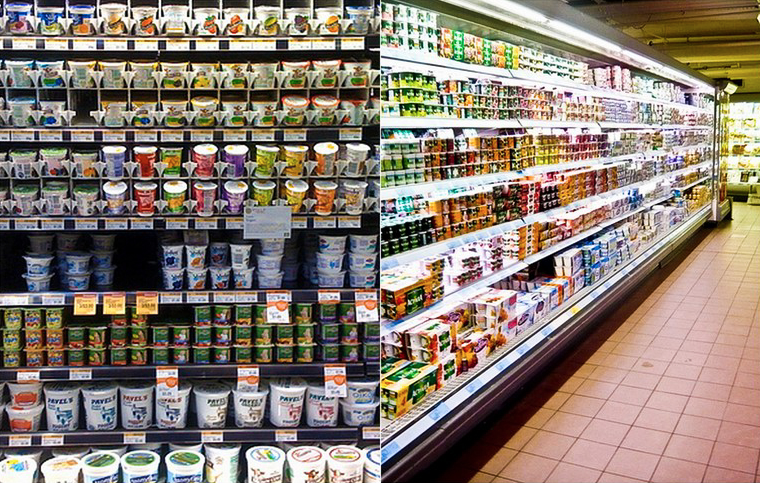
I was in the dairy aisle of the supermarket the other day and was blown away by how many different varieties of yoghurts there are. I’m not even sure if you can call half of the products yoghurt, more like a dairy dessert.
Here is a quick run down on the most common yoghurt varieties and the main differences. I hope it helps
Greek Yoghurt v Plain Yoghurt
Greek yoghurt is higher in fat than standard plain or natural yogurt and is considerably thicker. It generally has around 8 to 10 per cent fat compared to 3-4 per cent for normal plain yoghurt.
Low Fat and No Fat Yoghurt – Plain
Low-fat yoghurt has less than 3 per cent fat (like all foods labeled as ‘low-fat’). Regular full-fat yoghurt contains about 3.4% fat. That’s only marginally more fat to start with — hardly worth worrying really. Low fat and no fat varieties usually contain thickeners such as Gelatine (441), pectin (440) starch (1442, 1422) and gums (406-414) to stop the yoghurt from separating and looking and tasting runny.
Low Fat and No Fat Fruit flavoured
These varieties usually contain added sugars, usually sucrose or fructose and/or artificial sweeteners and because of this can contain more calories than natural full fat yoghurt. Some of the most popular fat free and lite yoghurts contain up to 7 teaspoons of sugar per 200g serve.
No Added Sugar
This usually means that an artificial sweetener such as acesulphame potassium (950) and aspartame (951) has been added for sweetness.
Personally, if you are choosing a yoghurt stick with something as natural as possible and add your own fruit for flavor. If you prefer a yoghurt with added fruits chose one with the least amount of added sugar. You can do this by checking the ingredients list and the amount of sugar per 100g.
About the Author

Kelley Bright
Kelley Bright is a highly credentialed health and fitness expert who holds a Masters degree in Nutrition/Dietetics, Bachelors degree in Exercise Science and a Diploma of Naturopathy.
Sign up to our newsletter & receive a FREE copy of kitchen makeover!

Tag Cloud
Contact
Mermaid Central
Professional Center
2431 Gold Coast Highway
Mermaid Beach Qld 4218Business Hours:
8am – 6pm
Monday, Wednesday, Thursday- 07) 5575 2444
- 0439 541 651
- info@brightbodies.com.au
